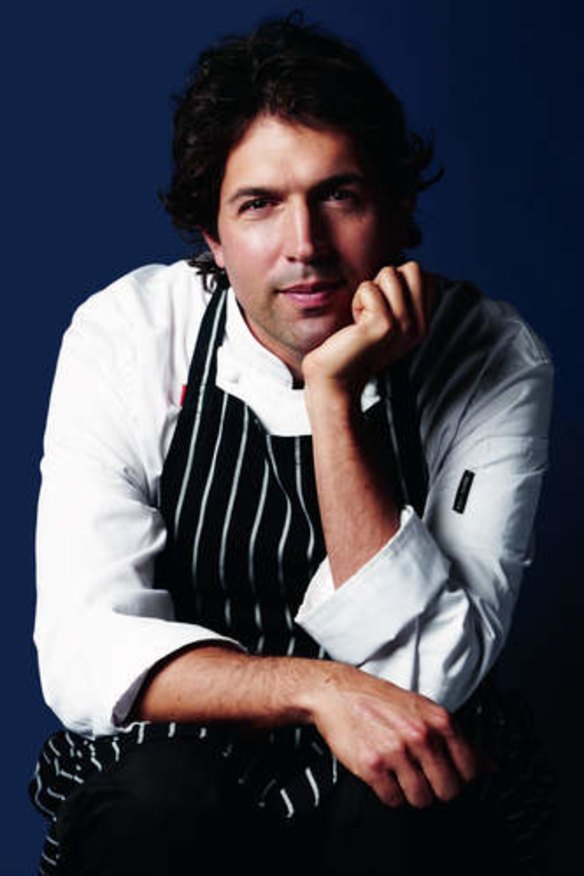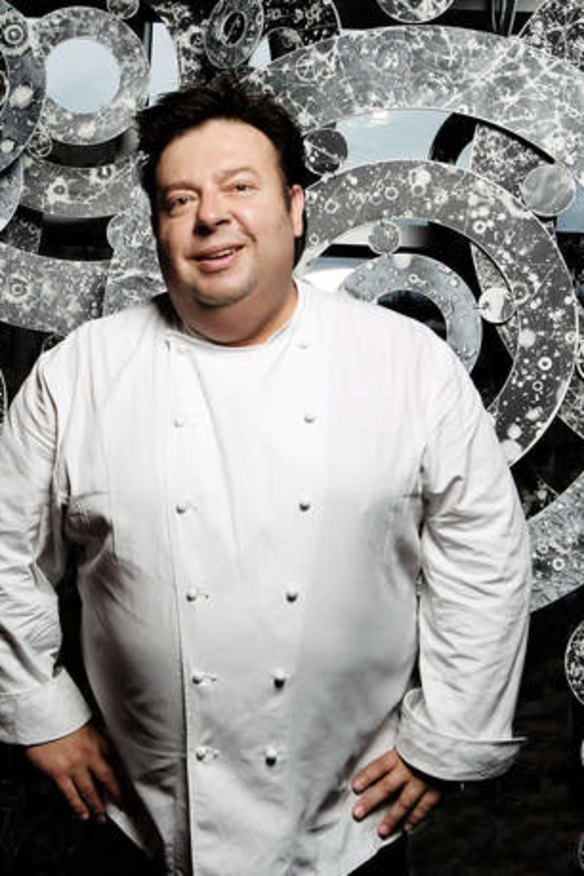Melbourne v Sydney
Australia's two largest cities have an age-old rivalry to determine which is the country's dining capital. Can there be a true winner?

The release of the World's 50 Best Restaurants list has reignited the frequently stoked flames of an old feud - is Melbourne or Sydney the dining capital of Australia?
From an unashamedly average shopping strip in Melbourne's south has sprung Australia's most esteemed restaurant, Attica, as voted by the judges compiling this respected poll. Attica jumped from 63rd place in 2012 to 21st in 2013. The Sydney contender, Quay, with its peerless harbour views, dropped 19 places to 48th.

Does the stunning rise of Ben Shewry's 60-seater reflect the broader reality of Australian dining? Does Melbourne have the culinary edge?
Summarising the sentiments of many chefs, Larissa Dubecki, chief critic for The Age Good Food Guide, says Australia has two dining capitals, each with its own strengths and weaknesses. ''It's a foolish exercise to anoint one over the other,'' she says. ''It's like two toddlers bickering in the sandpit.''
Terry Durack, the The Sydney Morning Herald's chief restaurant critic, agrees. ''Having to pick one over the other seems a little like 'old' thinking. It's more about collaborating these days," he says.
Indeed, what is special about Australia - and hugely beneficial to diners - is that it does not have a dining capital, says Nick Lander, a restaurant and food writer for Britain's Financial Times.
''There is, as a result, a tension between Melbourne and Sydney, a real competitive edge, which is extremely healthy and certainly does not exist in the UK, for example, where London is out on its own,'' Lander says.
But there is an argument to say Melbourne is the most influential food city in Australia.
Many of the trends in Sydney dining at the moment are driven by or inspired by Melbourne. Small bars, the result of a loosening of liquor licensing laws that transformed Melbourne 20 years ago, are proliferating in Sydney. ''Sydney is just catching on to the small-bar trend and some really great things are happening,'' chef and restaurateur Neil Perry says.
Then there is what Mark Best of Marque (Sydney) and Pei Modern (Melbourne) calls the democratisation of Sydney dining. That is the opening of more innovative, exciting restaurants at the middle (read affordable) level, well below the $50 main courses Sydney pioneered.
''Sydney is now really embracing democratic dining,'' Best says. ''Melbourne has had the jump on us for years in this area but we are now doing this everyday style of dining really well - much better than in the past.''
And in Sydney's central business district, there is even an emulation of Melbourne's atmospheric laneway dining culture as new operators cram into the small jumble of alleys and laneways near George Street.
Melbourne has always had very defined ''eat streets'' - such as Lygon Street in Carlton, Fitzroy and Acland streets in St Kilda; and Gertrude and Smith streets in Fitzroy - and here, too, Sydney dining, which has traditionally been more dispersed, is changing, says the head of Restaurant and Catering Australia, John Hart. Think of the emerging hot spots of George Street, the CBD, Manly, Bondi Beach and Alexandria.
''Sydney is lucky to have Melbourne as a constant source of inspiration; a muse, a benchmark,'' Durack says.
Multicultural, food-mad Melbourne is Australia's most serious food city, he says. ''Melburnians tend to have four or five restaurants that they return to as often as possible. Sydneysiders seem to be forever in search of the new and fashionable.''
So while the cities are in some senses becoming more similar, this sums up the differences that remain between the two.
''Sydney has the glamour, the seafood, the sunshine, the modernity; but Melbourne has the detail, the laneways, the coffee and the rich interior life,'' Durack says. ''Melbourne's long-established food culture makes its diners more discerning, and the more demanding you are as a diner, the better you make your restaurants.''
According to Best, who opened Pei Modern in Collins Street in 2012, his Melbourne clientele eat out three or four times a week (official statistics confirm that Melburnians dine out slightly more often than people in the rest of the country, Hart says) and want fresh, everyday, homestyle meals.
It helps that ingredients are 15 per cent to 20 per cent cheaper in Melbourne and rents are less expensive, Best says. Melbourne also has the huge advantage of having easily accessible central markets, such as the Queen Victoria and South Melbourne markets, that chefs can go to, as well as plenty of rural farming land around it. ''I am jealous of the supply chain in Melbourne,'' Best says. ''Chefs can either go to the markets or they get the fabulous cucumber, lettuce and mushroom guys coming straight to their doors.''
Since operational costs can be lower in Melbourne, all this means better produce can land on the plate and be cheaper for the diner, Best says.
Simple, tasty food served without ponce and frippery is what Melbourne diners are after, Dubecki says.
In Sydney, dining has a more celebratory element to it, Best reckons.
Chinta Ria owner Simon Goh told a journalist he'd never seen as many platinum American Express cards as when he came from Melbourne and opened his Chinta Ria Temple of Love at Sydney's Cockle Bay Wharf.
It is a cliche but, put simply by restaurant consultant Tony Eldred when summing up the two scenes, Sydney is the ''tart in full regalia'', while Melbourne is the laid-back lady.
So Sydney has the droolingly gorgeous locations in which to drop its restaurants, and a posse of diners eager to pounce on the latest, hottest openings.
''We have the iconic sites, the world-benchmark locations that people from overseas think of as uniquely Australian,'' says Maurice Terzini, owner of Icebergs Dining Room and Bar and a pioneer of Melbourne's European cafe and restaurant scene.
Sydney has long held the crown as the fine-dining capital of the country, fuelled by the fact it is the tourist gateway of Australia and has a slightly larger corporate population that can afford to flash those shiny credit cards around.
In this year's The Sydney Morning Herald Good Food Guide, Sydney had six three-hatted restaurants - the highest accolade given to a restaurant in Australia - compared with Melbourne's three three-hatters. And it has been similarly skewed this way for most of the past decade.
Banjo Harris Plane, Attica's restaurant manager (and a former Sydneysider), says Sydney is the home of kick-arse Asian food and its dining scene is ''all laid out on a glittering silver platter. There is huge pizazz, there are these incredible high-end, modern restaurants.'' In contrast, diners have to work harder to tap into the dining scene in Melbourne, which he says is more heavily Greek and Italian-influenced and is not so ''in your face, it's hidden down laneways''. Or on unremarkable shopping strips in Ripponlea.
For all Sydney's past dominance of fine dining, eating out at the mid-level is turning heads now, says Melbourne-born Sydney restaurateur Luke Mangan, citing warehouse-style operations such as Kitchen by Mike, the Grounds of Alexandria and cafe-cum-restaurant Kepos Street Kitchen. Some of the most talented chefs in Sydney are choosing to cook in places that are as far removed from the swanky fine diners with rock-star views as it is possible to get.
And so, Durack says, Melbourne is lucky to have Sydney to show it the way forward into the future. Sydney certainly takes ideas from Melbourne, ''but it develops them, turns them commercial and successful and gives them a long life'', he says.
Long live the competition between Sydney and Melbourne. As Lander says, the rivalry should be celebrated. ''I think that what made cooking in France special many years ago was the similar competition between Paris and Lyon, but that has gone now. It is still there in Spain, in the rivalry between Barcelona and Madrid. [It's] best not to have a food capital.''
Have your say: which city is Australia's true dining capital?
Restaurant reviews, news and the hottest openings served to your inbox.
Sign up